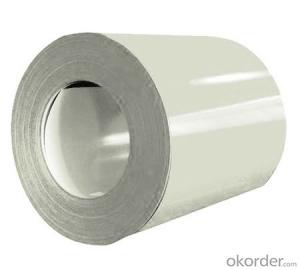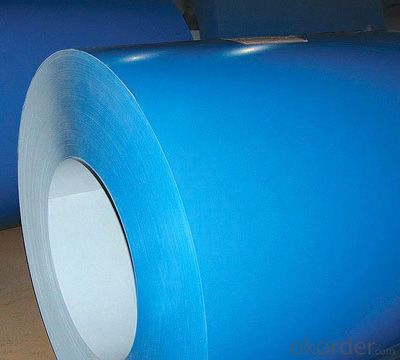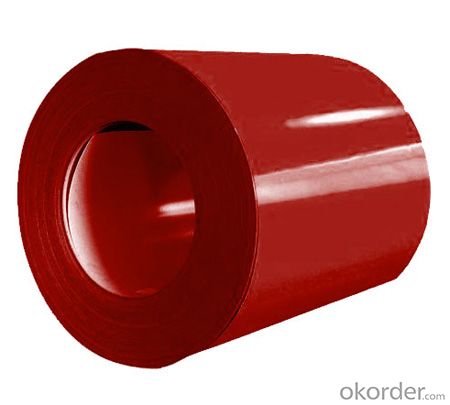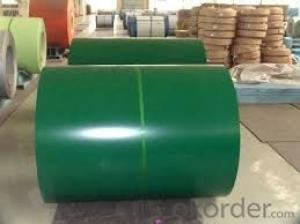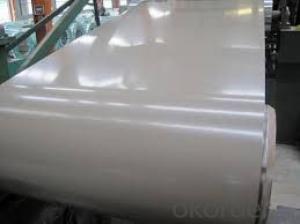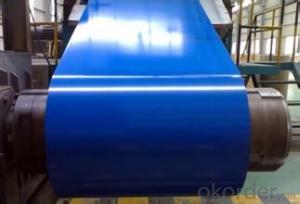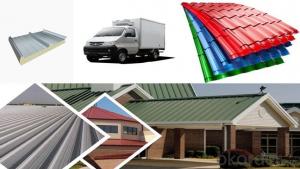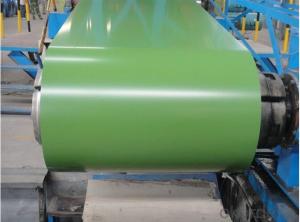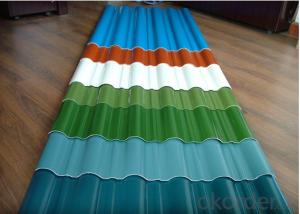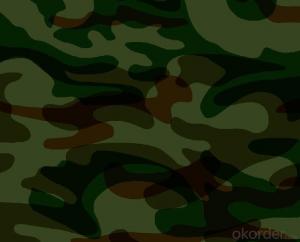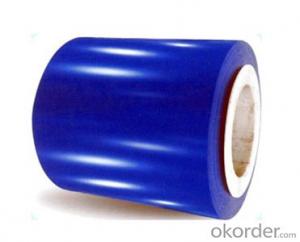Prepainted Galvanized Steel with Good Surface
- Loading Port:
- China main port
- Payment Terms:
- TT OR LC
- Min Order Qty:
- 50 m.t.
- Supply Capability:
- 15000 m.t./month
OKorder Service Pledge
OKorder Financial Service
You Might Also Like
Prepainted Galvanized Steel with Good Surface
1. Structure of Prepainted Galvanized steel Coil :
•Prepainted galvanized steel qualified with excellent decorative ,formability ,corrosion resistance ,coating adhesion ,can keep for a long time as well as maintain fresh color .For color coated steel sheet can obtain good economic benefit by steel belt wood ,efficient in construction and save energy ,prevent pollution etc.
2.Main Features of Prepainted Galvanized steel Coil:
• Smooth and flat surface
• Workability, durability
• Excellent heat resistance performance
• High strength
• Good visual effect
3.Prepainted Galvanized steel Coil Images:
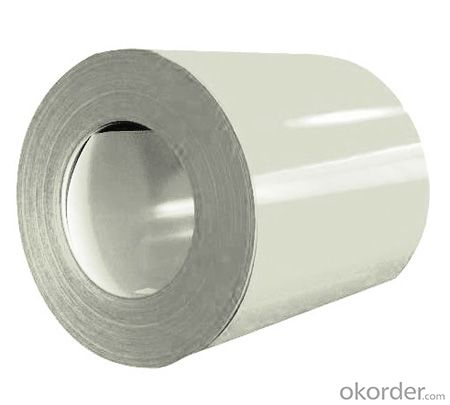
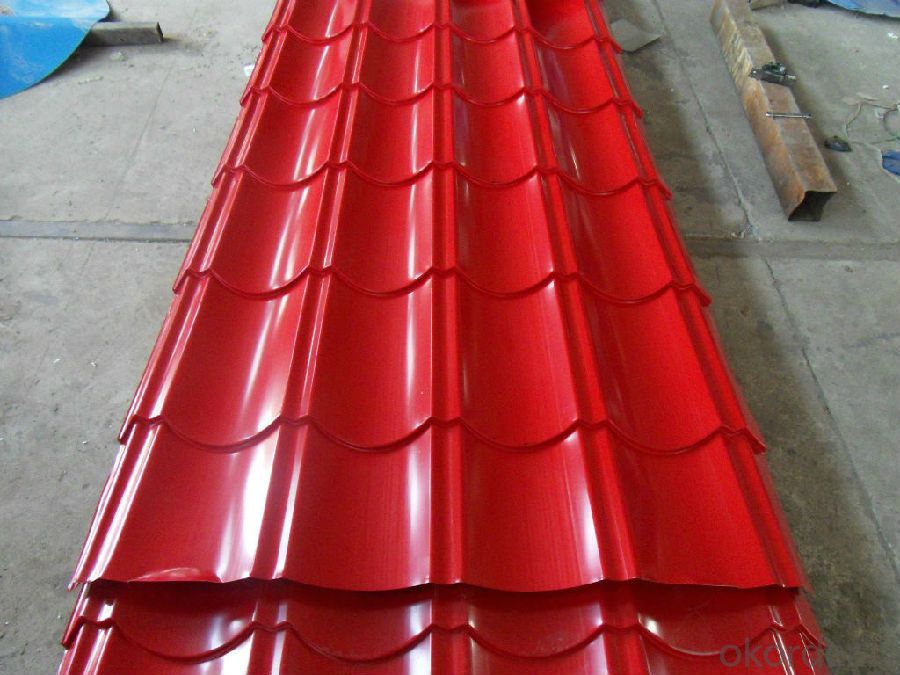
4.Prepainted Galvanized steel Coil Specification
Standard: ASTM, GB,JIS,JIS G3302 ASTM 755 EN10169
Grade: DX51D CGCC CS
Thickness: 0.18mm~1.2mm,
Width: 600-1250mm
Coil weight:3-12 MT
Coil ID:508/610mm
5.FAQ of Prepainted Galvanized steel Coi
We have organized several common questions for our clients,may help you sincerely:
1.How do you control your quality
We have established the international advanced quality management system,every link from raw material to final product we have strict quality test.
2.how long we will receive the goods ?
After receiving your deposit or workable lc ,our normal shipment date is 15-20days,and it takes around 28 days to reach your port of destination. But is up to different destination
- Q: What are the common methods of cutting-to-length steel coils?
- There are several common methods used for cutting-to-length steel coils, depending on the specific requirements and capabilities of the industry. 1. Shearing: This method involves using a shear blade to cut the steel coil into specific lengths. Shearing is typically used for thinner gauge materials and is a cost-effective method for high-volume production. 2. Slitting: Slitting is a process that involves passing the steel coil through a set of rotating circular blades. These blades cut the coil into narrower strips of the desired width. This method is commonly used for thinner gauge materials and is ideal for producing narrow strips or multiple widths from a single coil. 3. Laser cutting: Laser cutting uses a high-powered laser beam to melt and vaporize the steel coil, resulting in a precise and clean cut. This method is suitable for a wide range of materials and can be used for complex shapes and contours. Laser cutting is often used for high-precision applications and smaller production runs. 4. Sawing: Sawing involves using a saw blade to cut through the steel coil. This method is commonly used for thicker gauge materials and is ideal for cutting large sections or heavy-duty applications. Sawing can be done manually or with the use of automated sawing machines. 5. Rotary cutting: Rotary cutting is a method that uses a rotary shear to cut the steel coil into desired lengths. This process is commonly used for thicker gauge materials and is suitable for high-speed production. Rotary cutting provides a clean and accurate cut, making it a popular choice in many industries. It is important to note that each method has its advantages and limitations, and the selection of the appropriate cutting method depends on factors such as the material thickness, coil width, required precision, production volume, and budget constraints.
- Q: What are the common coil thickness and width combinations available for steel coils?
- The common coil thickness and width combinations available for steel coils vary based on industry standards and specific requirements. However, some commonly available combinations include coil thicknesses ranging from 0.5mm to 3mm and coil widths ranging from 600mm to 1500mm. Ultimately, the specific thickness and width combination for steel coils will depend on the intended application and manufacturing capabilities.
- Q: What are the common methods of slitting steel coils?
- There exists a variety of methods for slitting steel coils, each possessing their own distinct advantages and applications. 1. Rotary Shear Slitting: This technique utilizes rotary cutting knives to separate the steel coil. The coil is passed through the rotary shear machine, and the knives make simultaneous cuts along the coil's length. Rotary shear slitting is renowned for its high-speed operation and ability to handle thicker gauge materials. 2. Loop Slitting: Loop slitting involves introducing the steel coil into a looping pit, creating a loop of material. The loop is then pulled through a set of knives that make the cuts. This particular approach is commonly employed for thin gauge materials, providing precise cuts with minimal burr. 3. Drag Slitting: In drag slitting, the steel coil is fed through a series of driven rolls or drag pads, which maintain tension on the material. The coil is then guided through circular knives that perform the slits. Drag slitting is suitable for various steel gauges and offers good accuracy and edge quality. 4. Crush Slitting: Crush slitting entails passing the steel coil through a set of rolls, with one roll being rubber-covered and the other being hard. The rubber roll compresses the material against the hard roll, resulting in the slits. This method is commonly utilized for thin gauge or delicate materials, as it minimizes the risk of edge damage. 5. Laser Slitting: Laser slitting employs a high-powered laser beam to make precise cuts on the steel coil. This method is highly accurate and enables complex slitting patterns and narrow width cuts. Laser slitting is frequently utilized for high-end applications that demand superior edge quality. Each of these methods possesses unique advantages and is selected based on factors such as material thickness, desired edge quality, production speed, and cost considerations. It is crucial to meticulously select the appropriate slitting method to ensure the desired outcome and efficiency in steel coil processing.
- Q: How are steel coils inspected for quality?
- Steel coils are inspected for quality through various methods such as visual inspection, dimensional measurement, and non-destructive testing techniques. These inspections ensure that the coils meet specific quality standards and requirements by examining their surface condition, dimensions, and internal integrity.
- Q: What are the dimensions of steel coils used in the structural component industry?
- The dimensions of steel coils used in the structural component industry can vary depending on the specific application and requirements. However, some common dimensions for steel coils used in this industry include a width ranging from 600mm to 2000mm and a thickness ranging from 0.25mm to 10mm. The weight of these coils can also vary, typically ranging from a few kilograms to several tonnes. Additionally, the length of the steel coils can be customized to meet the specific needs of the structural component industry, with common lengths being 2000mm, 2500mm, and 3000mm. It is important to note that these dimensions are not exhaustive and can vary based on the specific product and manufacturer.
- Q: How are steel coils used in the production of packaging materials?
- Steel coils are used in the production of packaging materials by being processed into thin sheets or strips that can be shaped and formed into containers, cans, or other packaging components. These steel sheets are often used as a base material for packaging products due to their strength, durability, and ability to protect goods during transportation and storage.
- Q: what is the refining process doing to raw materials in steel
- As Mr. Perfessor says, refining raw steel involves a lot of purifications of the raw steel; and to expand a bit, these refining processes also add corrosion-resistances to certain graded steels, and durability factors, when heat-tempering processes are used. All of these refining processes, and coating processes help steel products last when exposed to moistures, salts, and other corrosive conditions that steel can be exposed to, whether the steel is in open-air/water/space, embedded in concretes and other masonry products, or part of a protective barrier system in power plants, engines, etc. Hope this also helps; the eggster.
- Q: What are the different methods of skin pass rolling for steel coils?
- There are several methods of skin pass rolling for steel coils, each with its own unique characteristics and benefits. Some of the most common methods include: 1. Dry Skin Pass: In this method, the steel coil is passed through a set of rolls without the application of any lubricant or coolant. This helps to improve the surface finish of the steel by reducing the thickness variations and imparting a smoother texture. 2. Wet Skin Pass: This method involves the application of a water-based emulsion or coolant during the skin pass rolling process. The coolant helps to reduce friction and heat generated during rolling, resulting in improved surface quality and reduced risk of surface defects. 3. Electrolytic Skin Pass: This technique utilizes an electrolytic solution during skin pass rolling. The steel coil is immersed in the solution, and an electric current is applied to the coil, resulting in controlled surface etching. This method is particularly effective in improving surface cleanliness and removing oxide scale. 4. Temper Mill Skin Pass: This method combines skin pass rolling with a tempering process. The steel coil is rolled through a series of rolls, followed by a heating and cooling process to achieve the desired mechanical properties and surface finish. This method is commonly used for high-strength and automotive-grade steel coils. 5. Tension Leveling: In this method, the steel coil is passed through a series of rolls under high tension. This elongates the steel and helps to reduce residual stresses and shape defects, resulting in improved flatness and dimensional stability. It is important to note that the choice of skin pass rolling method depends on factors such as the desired surface finish, required mechanical properties, and the type of steel being processed. Each method has its own advantages and limitations, and manufacturers typically select the most appropriate method based on their specific requirements.
- Q: Is it possible to make a homemade blacksmith forge from a washing machine drum made of stainless steel?
- Homemade Blacksmith Forge
- Q: Can steel coils be used in the production of automotive parts?
- Indeed, the utilization of steel coils is possible in the manufacturing of automotive parts. Various automotive components like body panels, frames, chassis, suspension parts, and engine parts frequently incorporate steel coils within their production process. To achieve the desired shape of these automotive parts, the steel coils typically undergo a range of techniques including cutting, stamping, bending, and welding. The strength, durability, and corrosion resistance of steel make it a favored material for automotive parts. Additionally, steel coils are accessible in different grades and thicknesses, enabling manufacturers to customize the material properties to fulfill specific requirements for diverse automotive applications. Collectively, steel coils play a crucial role in the fabrication of automotive parts, thereby contributing significantly to the performance, safety, and durability of vehicles.
Send your message to us
Prepainted Galvanized Steel with Good Surface
- Loading Port:
- China main port
- Payment Terms:
- TT OR LC
- Min Order Qty:
- 50 m.t.
- Supply Capability:
- 15000 m.t./month
OKorder Service Pledge
OKorder Financial Service
Similar products
Hot products
Hot Searches
Related keywords
